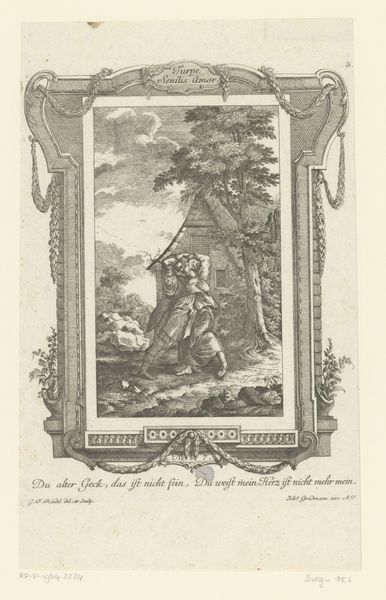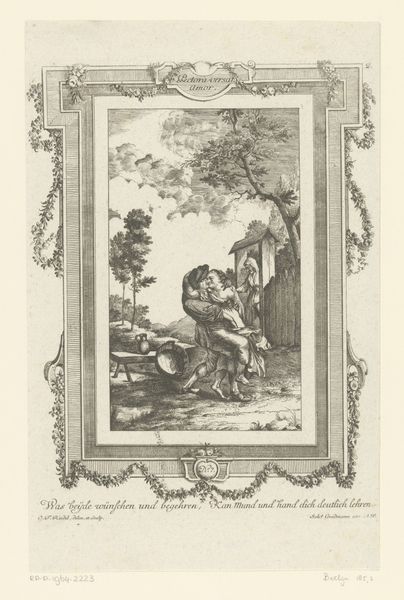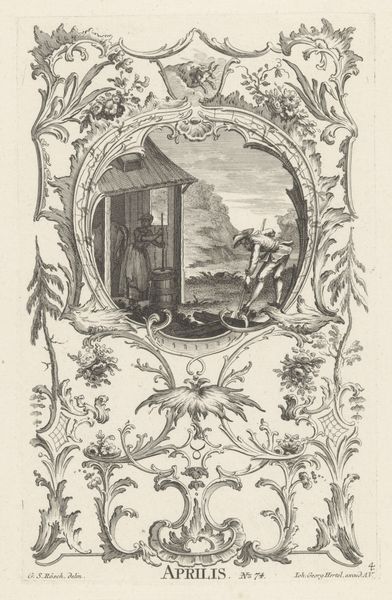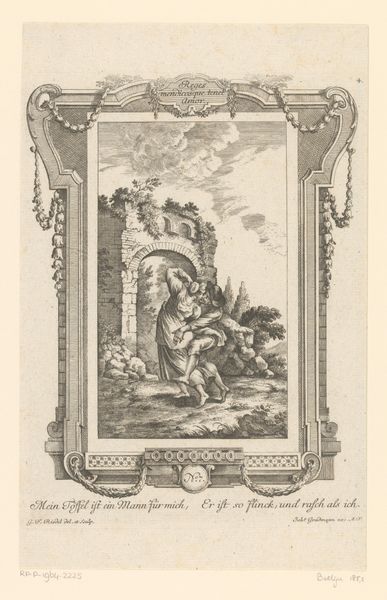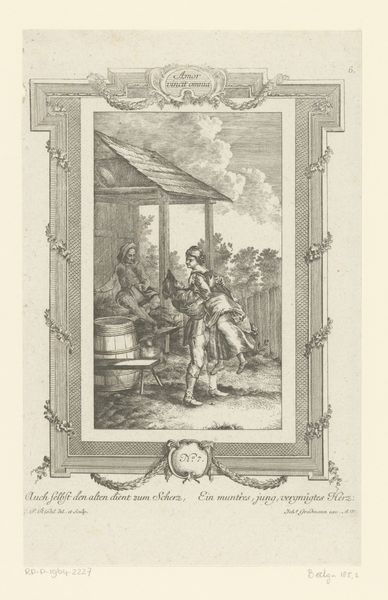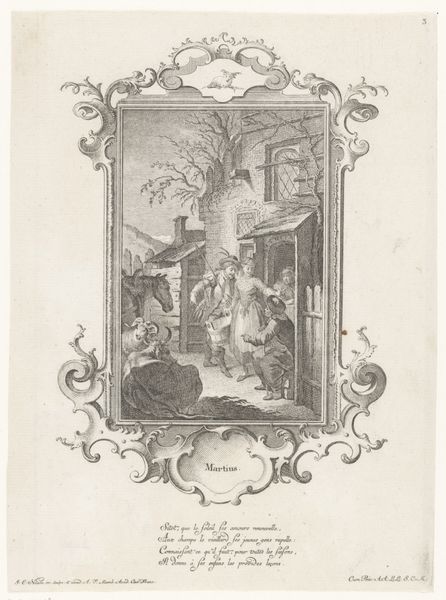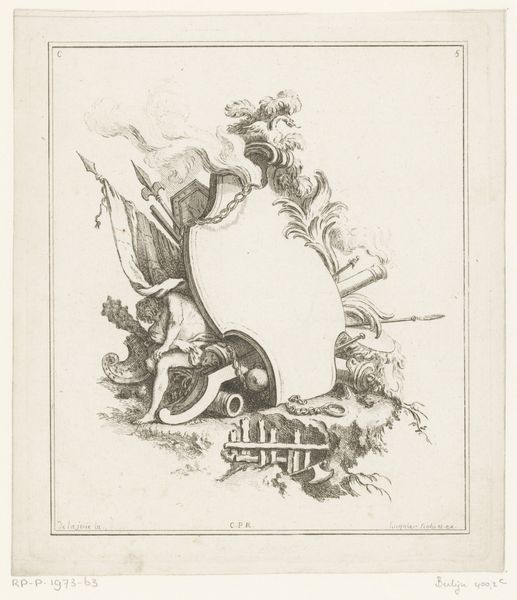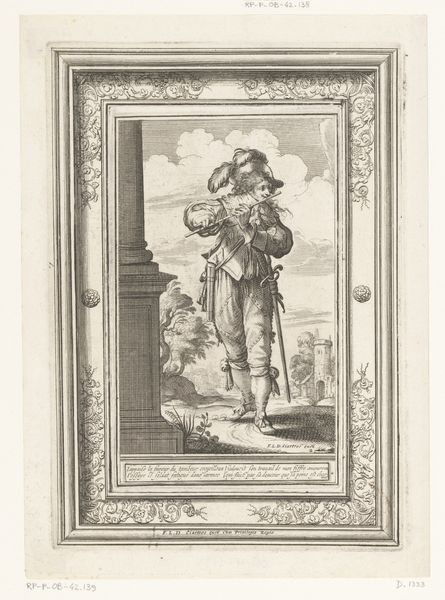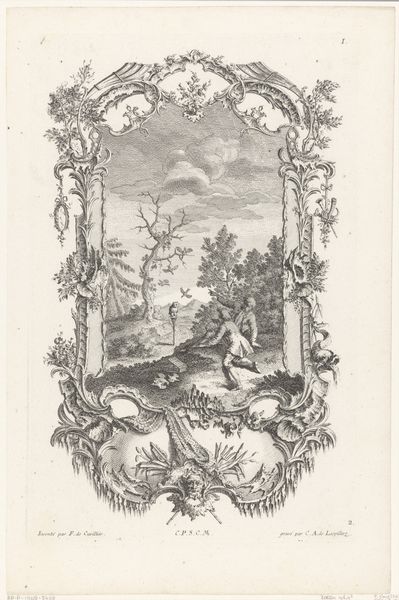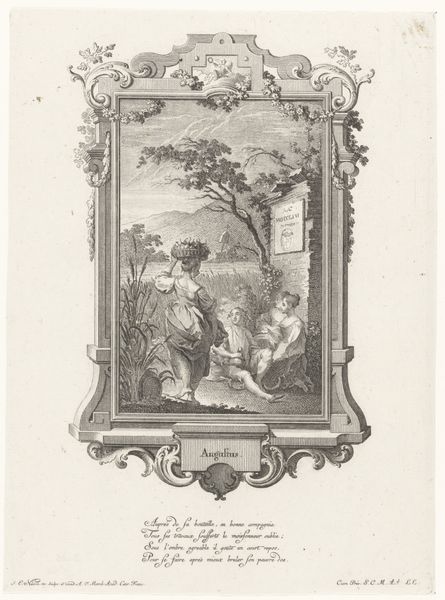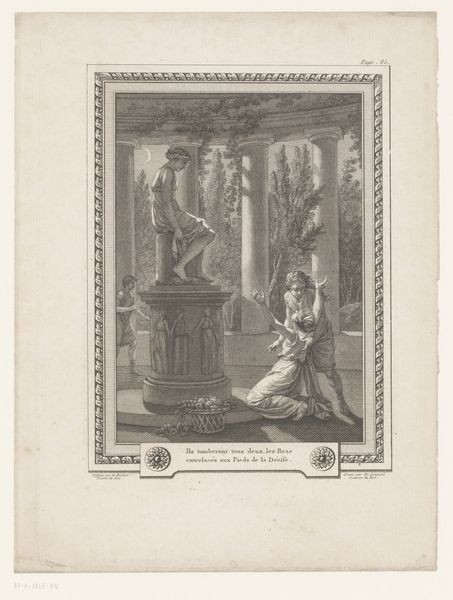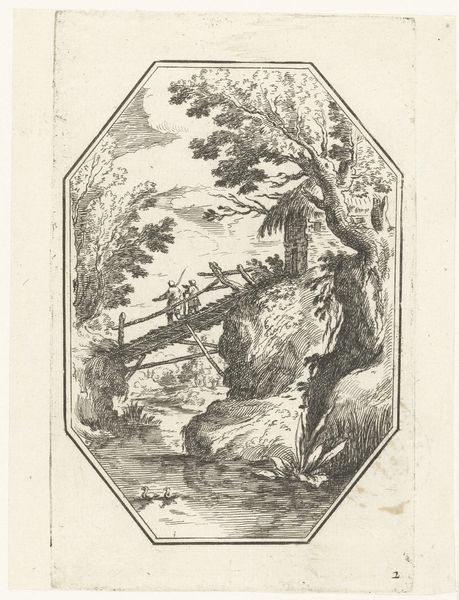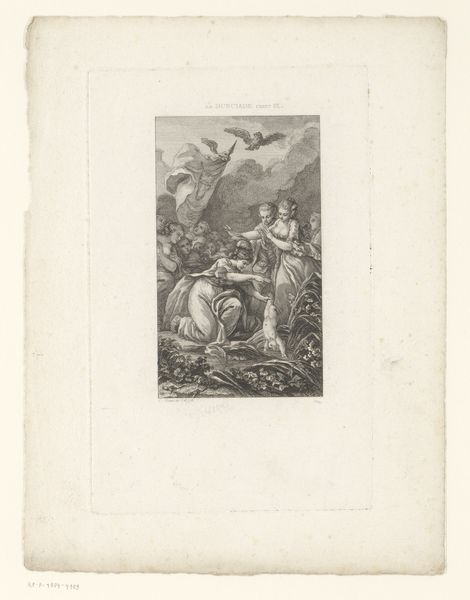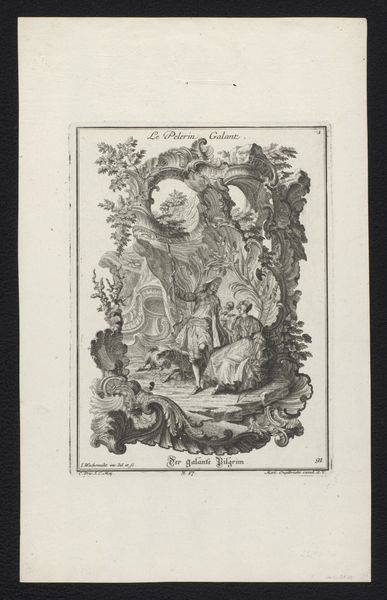
Dimensions: height 230 mm, width 177 mm
Copyright: Rijks Museum: Open Domain
Curator: What a lively image! We are looking at an engraving titled "Verliefd stel dansend," which roughly translates to "Loving Couple Dancing." It was created by Gottlieb Friedrich Riedel sometime between 1778 and 1779. Editor: It immediately strikes me as joyous, yet perhaps a bit chaotic. The couple at the center seems caught in a whirlwind, a very physical, even clumsy embrace. Curator: Clumsy maybe isn't the word I would use. Riedel’s work emerges in an era increasingly fascinated by sentimentality and dramatic representations of everyday life. We're on the cusp of Romanticism, where personal feeling is key, and you certainly see that with the movement. Editor: It makes you wonder, who are these people? And why are they embracing in such a manner outside this quaint house, while someone observes them from the doorway? The presence of a third party also introduces this tension of how we represent love, affection, and intimacy as a staged image versus lived reality. Curator: Precisely! Think about the culture that produced and consumed it. Genre scenes like this were immensely popular among the rising middle class. They depict relatable situations, celebrating domesticity, virtue, and sentimental bonds. There are actually some words inscribed in German on the piece, "Haissa! Lustig, froh bin ich, Meine Frautel liebet mich!," basically "Haissa! Happy and cheerful I am, my darling loves me!" Editor: Given that context, it feels less chaotic now. The framing, though formal, contrasts nicely with the unbridled emotion within the scene. I keep wondering, though, is the embrace mutual or more forced than romantic? Curator: I can see that reading, especially in the light of later ideas around power dynamics and the construction of gender roles. But I would offer it also might have just reflected different notions of public intimacy, and representations of the family sphere, during this period. It's an artwork, I would argue, about seeing the representation and cultural values associated with these ideas in society at this moment in time. Editor: That really shifts the perspective and opens up even more interpretation. Thank you for highlighting these cultural and historical frameworks to really give context to that otherwise simple-seeming expression of "loving couple dancing" in 1770s. Curator: Of course. Analyzing such imagery not only sheds light on Riedel's work but it also gives a window into the social and cultural landscape of the era in which it was created and perceived.
Comments
No comments
Be the first to comment and join the conversation on the ultimate creative platform.
